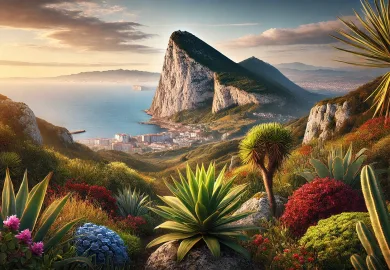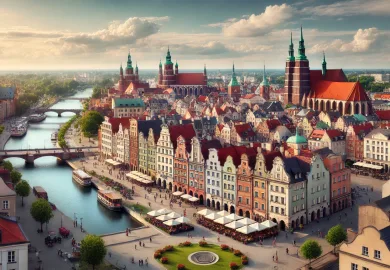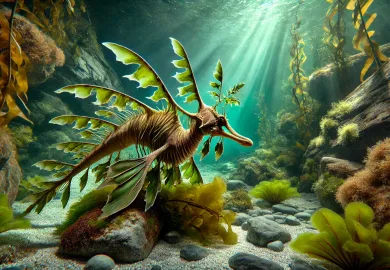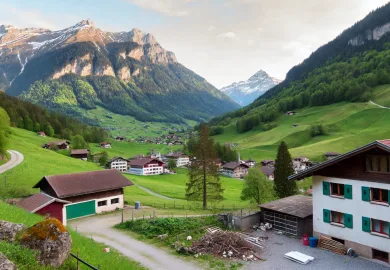
When most travelers think of the Netherlands, images of iconic windmills, tulip fields, and bustling cities like Amsterdam and Rotterdam spring to mind. However, beyond these well-known attractions, the Netherlands harbors a wealth of unseen destinations that reveal the country’s rich history, natural beauty, and cultural treasures. From quaint villages to secluded islands, these hidden spots are waiting to be explored by those willing to venture off the beaten path.
Explore the Tranquil Beauty of Giethoorn
Known as the “Venice of the North”, Giethoorn is a hidden gem in the province of Overijssel that offers visitors a serene and picturesque escape. Unlike its Venetian counterpart, Giethoorn is free from the overwhelming crowds, allowing travelers to immerse themselves in the peaceful atmosphere of this car-free village.
Visitors can explore the village by boat, gliding through narrow canals lined with centuries-old cottages and blooming gardens. The traditional thatched-roof homes, dating back to the 18th century, offer a glimpse into Dutch rural life. For those who prefer a slower pace, Giethoorn’s wooden footbridges and winding paths provide perfect opportunities for leisurely strolls.
In addition to its natural beauty, Giethoorn is home to several charming museums, including the Museum De Oude Aarde, where visitors can marvel at a collection of rare minerals and gemstones. This hidden village is a haven for nature lovers, photographers, and those seeking a quiet retreat from the hustle and bustle of urban life.
Discover the Enchanting Island of Texel
While Texel is the largest of the Wadden Islands, it remains one of the most underrated destinations in the Netherlands. Located in the North Sea, Texel is a nature lover’s paradise, offering endless stretches of sandy beaches, unique wildlife, and stunning landscapes that seem worlds away from the mainland.
One of Texel’s main attractions is its National Park Dunes of Texel, a protected area that boasts a diverse range of ecosystems, including sand dunes, heathlands, and forests. Here, travelers can embark on hiking and cycling adventures, spotting rare bird species and other wildlife along the way. For an even more immersive experience, guided seaside tours provide a closer look at the island’s coastal wonders, such as its seal colonies.
Texel also offers a charming mix of culture and history, with several quaint villages to explore. The town of Den Burg features traditional Dutch architecture and lively markets, while the nearby Ecomare museum and seal sanctuary offers an educational experience for visitors of all ages. Whether you’re seeking outdoor adventures or quiet beach days, Texel offers an unforgettable escape from mainland life.
Wander Through the Historic Village of Thorn
Tucked away in the southern part of the Netherlands, Thorn is a small village with a fascinating history. Known for its whitewashed buildings and cobblestone streets, Thorn is often referred to as the “White Village” and has remained remarkably well-preserved over the centuries.
Thorn was once a tiny principality ruled by an abbess and female nobility, giving the village a unique social and architectural history. The Abbey Church of Thorn, which dates back to the 10th century, is a prominent feature of the village and a must-see for any visitor. Inside, the church is adorned with Gothic and Baroque elements, and it stands as a testament to Thorn’s religious significance in the region.
Visitors can wander through Thorn’s picturesque streets, stopping at cozy cafes and local shops to savor the slow pace of life. History enthusiasts will enjoy learning about Thorn’s past at the Municipal Museum Het Land van Thorn, which provides insights into the village’s medieval origins and its intriguing social structure.
Experience the Natural Wonders of De Hoge Veluwe National Park
For travelers looking to immerse themselves in nature, De Hoge Veluwe National Park is a must-visit destination. Located in the province of Gelderland, this sprawling park covers over 5,400 hectares of diverse landscapes, including forests, sand dunes, and heathlands. While De Hoge Veluwe is a popular destination among locals, it remains a hidden gem for international travelers.
One of the park’s unique features is its free white bicycles, which visitors can use to explore the various trails and paths that wind through the park. Cycling through this untouched wilderness offers the chance to spot wildlife such as red deer, wild boar, and a variety of bird species. The park is also home to the Kröller-Müller Museum, which houses an impressive collection of Van Gogh paintings, making it a perfect combination of nature and culture.
For those seeking peace and solitude, De Hoge Veluwe offers plenty of quiet corners where you can escape the crowds and enjoy the beauty of nature. Whether you’re hiking, cycling, or simply relaxing, this park provides a serene and rejuvenating experience in one of the Netherlands’ most beautiful natural settings.
Exploring the unseen places in the Netherlands reveals a side of the country that goes beyond the typical tourist attractions. From the peaceful waterways of Giethoorn to the untamed beauty of Texel, these hidden gems offer a more intimate and authentic Dutch experience. Whether you’re drawn to nature, history, or simply seeking tranquility, the Netherlands’ lesser-known destinations promise unforgettable adventures.








